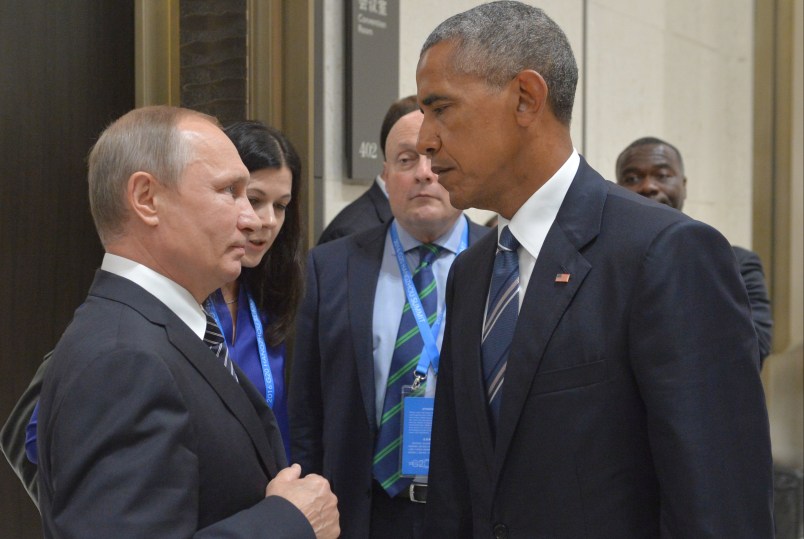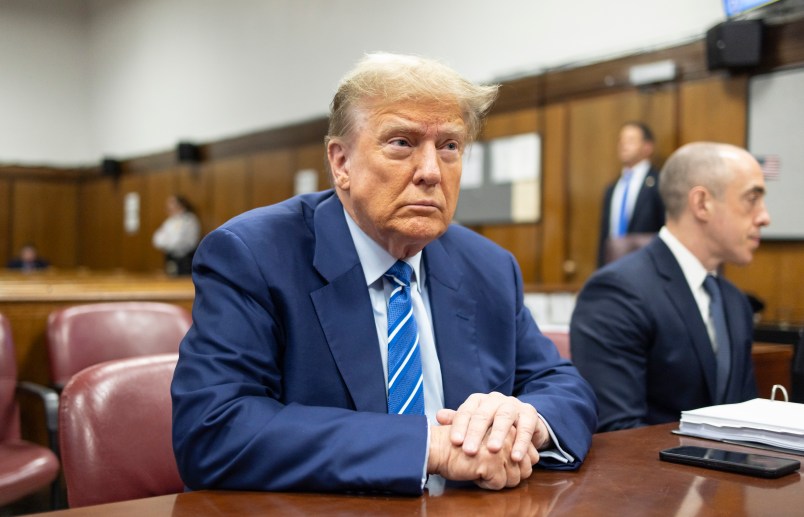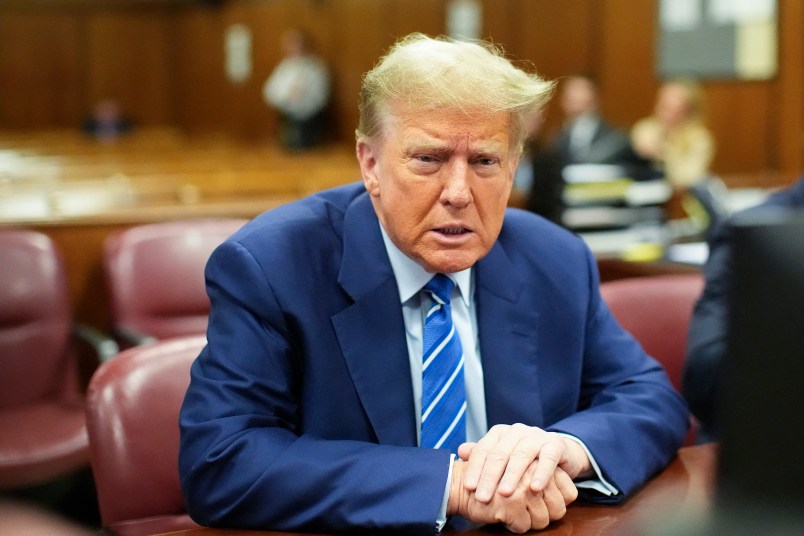Yesterday I was looking back through the progression of events with the at-first-suspected and now confirmed (according to the US government, at least) Russian meddling in the 2016 US election. It starts in June with a report that a private security firm (Crowdstrike) had concluded that a hack of the Democratic National Committee’s email servers had emerged out of Russia. (Go back and you’ll see an early theory was that they were stealing anti-Trump oppo with the intention of giving it to Trump.) It escalated in July with the first Wikileaks release of hacked DNC emails. And it’s gone on from there, with more releases of emails, an increasingly Trump-aligned Wikileaks and less and less active denials from Russia that its security services are behind the leaks.
As I’ve noted, this seems like a classic disruption campaign – a campaign which does not have an immediately clear goal other than to sow confusion and disruption in a US election. It’s true that Russia has funded various rightist parties in the EU zone. Putin has a particular enmity for Hillary Clinton tied, among other things, to the protests over his reelection in 2012. He clearly has some affection for Donald Trump, though I don’t think we really know if this is more than situational – he’s a disrupter to the US political process, opposes the people who have been most disagreeable to Putin within the US political process, etc.
For all this, what is Putin trying to accomplish exactly?
The best explanation I’ve seen is that he is trying to pull off a so-called ‘color revolution’ in the US. ‘Color revolutions’ are a short-hand for a series of electoral/popular uprisings in post-Soviet successor states on Russia’s borders and also in the Balkans. (To a degree the Arab Spring uprisings are seen in the same light, especially in Russia.) The big examples for Russia were the so-called ‘Rose Revolution’ in Georgia in 2003 and the Orange Revolution in Ukraine in 2004. The Russians have viewed these electoral uprisings as America-backed subversion using among other things novel communications technologies. They viewed the protests in Russia in 2012 tied to that year’s Russian presidential election as evidence that the US was no longer satisfied with overthrowing client states in what Russia has historically called its ‘near abroad’ to trying to overthrow the Russian state itself.
Is any of this true? Well, sort of, yes. The US has long been focused on fomenting democratic change, greater transparency and the rule of law abroad – especially in non-friendly states. The mix of idealism and interest and hypocrisy and obliviousness in all this has always been of a piece. It’s not one or the other. They all combine. The US long funded various pro-democracy and civil society groups in Egypt, for example, under Mubarak. But it’s certainly the case that this was always tempered by the US’s deep investment in Mubarak’s regime. The post-Soviet space has been a particular focus because it uniquely brings together authoritarian regimes with loose democratic trappings, limited or non-existent rule of law and openness with a state the US has seen for a century as a key geopolitical challenger on the world stage.
But that’s not all that’s here. Each of these countries, in addition to having whatever desire all peoples may have for free government, has historically tense relationships with Russia. Needless to say, this is an understatement. They are arguably imperial dominions long ruled by Imperial and then Soviet Russia from Moscow which have temporally shaken free of Russian domination. In each of these cases these were locally-rooted eruptions of popular discontent. But they were helped and supported by the US. Both are true. But Russia’s response has been to build up an entirely new defense doctrine focused detecting and blocking such ‘attacks’ and developing a capacity in turn to mount them against strategic enemies.
Back in August I wrote about just this topic (“How Russia’s New Defense Doctrine Is Like Fox News“). As I argued then, there is a humorous but real parallel between Russia’s response to the color revolutions and post-Soviet weakness and institution building on the American right in the late 20th century. As I argued then, movement conservatives built the Heritage Foundation as a counter to the Brookings Institution. It built Fox News as a counter to CNN and the national news networks. In each of these cases there was some truth to how conservatives perceived a playing field stacked against them. The 50s and 60s and 70s were different than the times we live in. Brookings was broadly liberal in a Cold War, establishment way. The networks too were part of a broadly cosmopolitan elite culture. That wasn’t liberal in any real political sense but it also wasn’t friendly to movement conservatism.
Yet the new institutions movement conservatives built were in most ways cartoonish replicas of the institutions they meant to counter – essentially propaganda operations stood up against public policy and news organizations which were legitimate public policy and news organizations but nevertheless inflected against the assumptions and goals of conservatism. This lack of parity was based in part on bad faith. A lot of bad faith. But I have always thought that you can’t really understand this dynamic without understanding that in addition to bad faith these institutions were built by people who didn’t really understand the institutions they were opposing. Conservatives believed that Brookings and CBS news really were little more than liberal propaganda operations, tied to left-wing parties, operating on a strategy of further partisan and ideological goals. Those weren’t just verbal brickbats. They really believed it at some level. So when they went to build their own versions they built to that model.
In the post I noted above, I wrote about what the Russians call Hybrid Warfare or the Gerasimov Doctrine, a new approach to national defense in which much more aggressive and wide-ranging information and asymmetric warfare makes up for an inability to defend against the US and Europe in conventional military terms. That is simply because the Russian economy is too tiny to sustain such an effort. South Korean, Brazil and Italy all have larger economies than Russia. As I wrote then and I continue to think based on everything that has happened since August, this is fundamentally familiar to the dynamic in the US. At a basic level, what Russia has built, what Russia is trying to do is based on a very incomplete and distorted understanding of what democracies, open societies and free flows of information even are. Look at my discussion of Adrian Chen’s reporting on Russian troll farms in that August post. A huge amount of the work is planting hoaxes about Ebola or industrial accidents that never happened, online harassment and more. Chen’s main article on the topic was published in 2015. But when he went back to look at some of the Russia-run Twitter accounts that had been spreading Ebola hoaxes had been rebranded as pro-Trump accounts from Middle America.
That’s why I think the color revolution model is the best framework for understanding what’s happening here. Some of it is bad faith. A lot of it. But at some level they believe this is what was done to them.








